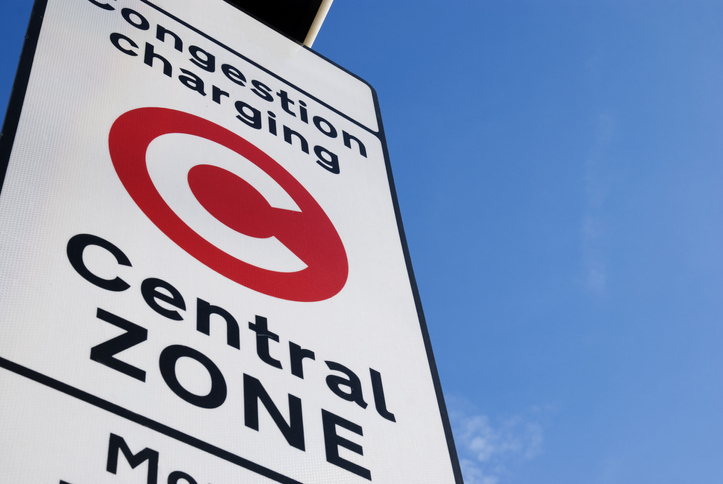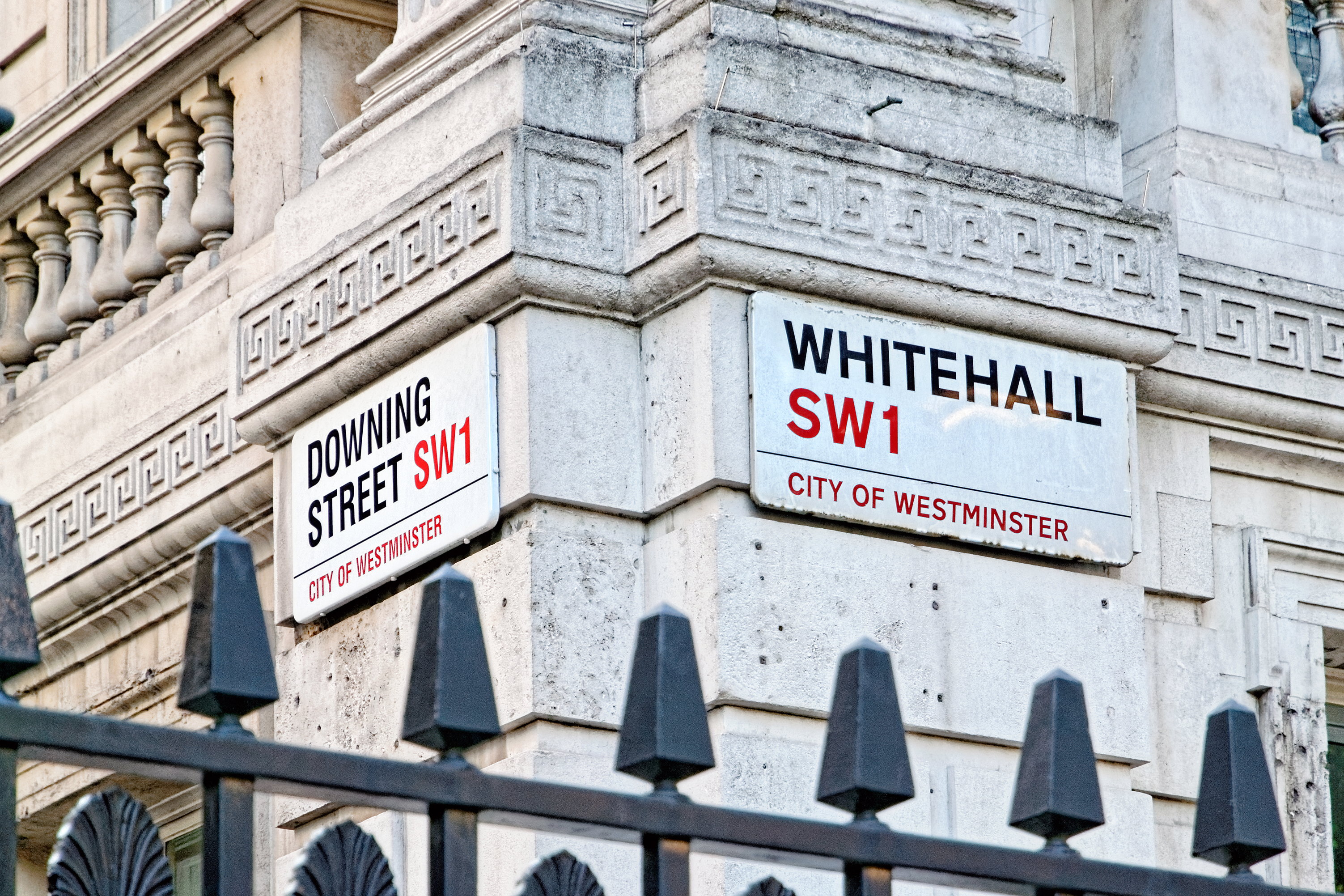What is the congestion charge?
The congestion charge is a daily levy imposed on drivers choosing to drive within central London.
Since 2022, it has applied between 07:00 and 18:00 on Monday to Friday, and 12.00 to 18.00 on weekends and bank holidays.
The standard charge is £15 per day.
Transport for London forecast that the congestion charge will raise £232 million in the next financial year. This is similar to the £229.8 million in 2017/18, of which £57.7 million was spent on the administration of the scheme.


The congestion charge zone covers a large portion of central London.
The boundaries of the congestion charge zone spread to Elephant and Castle and New Kent Road in the South, Tower Bridge Road and Commercial Street in the East, Euston Road and Marylebone Road in the North, and Park Lane and Edgeware Road in the West.

Traffic speeds and congestion in central London have not altered much since the introduction of the scheme.
Even after the removal of the Western extension, that existed briefly between 2007 an 2011, the Congestion Charging Zone is one of the largest congestion charging zones in the world.
The scheme is monitored by cameras on roads across the congestion charge zone. These read car number plates and cross-reference them against a register of cars that have paid the charge.
Drivers can pay the £15 charge in advance or on the day of travel. There are several methods of payment, including telephone, text message, post, online or in a shop. Failure to pay risks a penalty charge notice of £180, reduced to £90 if paid within 14 days. The fine rises to £270 if it is not paid within 28 days.
Groups exempt from paying the congestion charge and those eligible for discounts include people with disabilities, residents living within the congestion zone, emergency services and breakdown recovery vehicles, and taxis. Fully electric cars are ‘congestion charge exempt’ until 2025.
History of the London congestion charge
The first Mayor of London, Ken Livingstone, introduced the congestion charge at £5 a day in February 2003 with the aim of reducing traffic congestion in and around the charging zone.
The charge was increased to £8 a day from July 2005, to £10 from January 2011, to £11.50 from June 2014, and £15 from June 2020.
Among other aims, the congestion charge is meant to reduce the length of journeys within the congestion zone, improve bus services and encourage motorists to use public transport instead of their cars.
The charge also attempts to collect net revenues to improve public transport facilities in London, as, by law, the proceeds raised by the congestion charge must be allocated to expenditure on public transport in London.
In 2007 the Congestion Charging Zone was extended to the West of London, only for that extension to be abolished by Boris Johnson in 2011 during his first term as London Mayor.
In 2017 a Toxicity Charge, or T charge was introduced as part of a further effort to tackle air pollution levels in London. Under this system, those cars which are deemed older and more likely to pollute, alongside vans that do not meet the Euro 4 standards, had to pay an extra £10 charge to drive within central London. This typically impacts on petrol and diesel cars registered before 2006.
London Mayor Sadiq Khan replaced this T Charge with the Ultra Low Emission Zone (ULEZ) in 2019. Under this arrangement, the fee for higher polluting cars and motorcycles was raised to £12.50, and to £100 for lorries, buses and coaches. The scheme also became operational for 24 hours a day.
During the Covid 19 pandemic of 2020-21, the congestion charge scheme was suspended for a couple of months to support critical workers in their ability to travel around the City.
In 2021, plug-in hybrid electric vehicles (PHEVs) were no longer exempt from the London congestion charge. In 2022 the hours of the congestion charge were shortened.
In November 2022, the London Mayor, Sadiq Khan announced that the Ultra Low Emission Zone would be extended to become London wide from August 2023. The plans have met with strong resistance from councils in Hillingdon, Harrow, Bexley and Croydon, all of which have said that they will work to resist its implementation by using all means at their disposal.
Debate around the congestion charge
Criticisms of the Congestion Charge
The congestion charge faced a barrage of criticism soon after its inception. Opponents challenged its regressive nature, whereby poorer motorists are charged the same levy as richer car owners, and some have described the congestion charge as a ‘tax on the poor’. The decision to impose the levy on key workers, who are not exempt from the congestion charge, was similarly criticised.
The impact of the congestion charge on businesses within the capital has been a major source of contention. Businesses affected by the charge have been vocal critics of the scheme, because of both the new costs imposed by the congestion charge and concerns that visitors to central London would be deterred by the daily charge.
After its initial introduction, a study of 334 firms by the London Chamber of Commerce in November 2003 found 79 per cent of shops reported a fall in takings and 42 per cent said the congestion charge was to blame. By January 2005 the same survey found 84 per cent of shops reported a fall in takings, with 62 per cent attributing this to the charge.
There have also been criticisms of the scheme’s effectiveness in combatting ‘charge evasion’. In 2008 it was still being suggested that a quarter of penalties were going unpaid, a problem which was linked some said to the use of copied number plates.
Tfl has since said it is keeping a record of such plates and an automatic alert is now triggered to police when one passes into the Zone.
There has also been controversy around the fact that a number of leading embassies including the United States, Germany and Russia refuse to pay the charge. Classifying the congestion charge as a tax rather than a toll, they claim an exemption for ambassadorial staff from local taxes under the Vienna Convention.
Although the vast majority of embassies agree to pay the charge, charges and fines owed by those embassies not agreeing to the system were said to be close to £100 million by 2015. During his time as London Mayor, Boris Johnson reportedly said that he would ‘slap an ASBO’ on the US ambassador in relation to the matter, if it wasn’t for the Geneva convention.
Opponents of the congestion charge point to the fact that levels of congestion in London, alongside traffic speeds, have altered very little since the introduction of the Congestion Charging scheme.
The scheme has also proved unpopular in outer London. On the edge of the zone, traffic levels are said to have risen as drivers skirt the outskirts of the charging area. Whilst residents in outer London have seen a large increase in the number of controlled parking zones to prevent people who would have previously driven into central London, now parking up their cars for the day outside the controlled area.
Support for the congestion charge
The congestion charge has though been welcomed by environmentalists as a way of reducing carbon emissions and encouraging people to use public transport. Town planners across the UK have begun looking into the scheme as a way of cutting congestion in other areas.
Transport for London have suggested that following its introduction the congestion charge scheme resulted in a 10% reduction in traffic volumes and an overall reduction of 11% in vehicle kilometres travelled between 2000 and 2012. They argue that although traffic congestion in central London is largely unchanged, the position would have been substantially worse without the introduction of the scheme. Indeed Transport for London have suggested road speeds would have dropped from 17.5 km/hour to 11.5 km/hour had the scheme not been introduced.
The emphasis of the charging scheme on low emission vehicle is also said to have had an impact on improving air quality, particularly in relation to nitrogen dioxide.
After the costs of running the scheme, surplus funds are required by law to be invested into London’s transport infrastructure. In the first decade of the scheme’s operation this generated an extra £1.2 billion for public transport in London. On an annual basis the scheme contributes just under 5% of Transport for London’s revenues.
Quotes
“The amount in unpaid Congestion Charges and Penalty Charge Notices owed by embassies is now so large that it could pay for more than 260 new buses on London’s streets, or fund the significant expansion of the cycle hire scheme, or alternatively reduce fare rises”… “It is disgraceful that £50 million is now being denied to Londoners by embassies that dodge paying the Congestion Charge. The small minority of embassies that think it is acceptable to evade paying the Congestion Charge are insulting each and every Londoner.” Caroline Pidgeon – Leader of the Liberal Democrat London Assembly Group – 2011
“The results showed that there was little change in pollutant levels in London as a whole. But there were more substantial falls in the charging zone. Levels of Nitrogen Dioxide fell the most.”… “Policies affecting a larger geographical area and residential population, and which directly aim to reduce vehicle emissions, are likely to have larger public health impacts”. -Researchers from King’s College, London and the London School of Hygiene and Tropical Medicine, 2008










